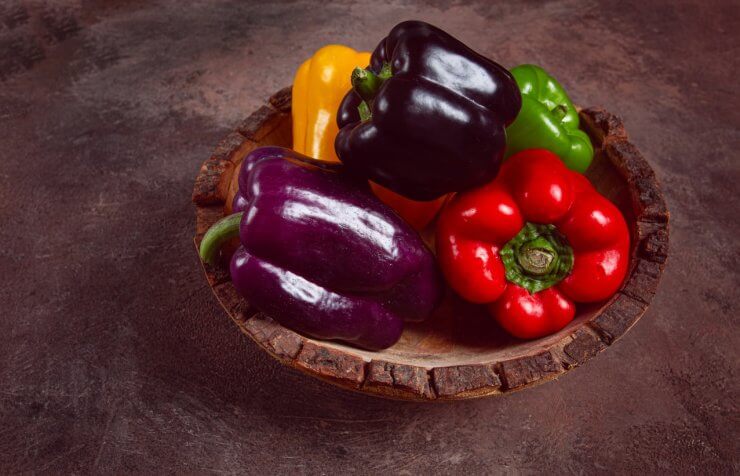
Forget the standard green blocky bell pepper–today’s gardeners are rediscovering the dazzling world of heirloom peppers, where fruits can be deep violet, striped like a carnival tent, or shaped like tiny hearts. After decades of supermarket uniformity, these extraordinary varieties are staging a spectacular comeback in gardens and farmers markets across the country.
What Makes a Bell Pepper “Heirloom”?
In gardening terms, an heirloom variety is like a family recipe passed down through generations–it’s open-pollinated, meaning bees and wind do the work instead of plant breeders in lab coats. These peppers have been grown for at least 50 years (some purists say 100), often carrying stories of immigration, survival, and regional pride in their seeds.
Here’s the fascinating difference: while those perfectly uniform bell peppers at the grocery store are F1 hybrids–bred for shipping durability, shelf life, and that familiar blocky shape–heirlooms were selected by gardeners for flavor, beauty, and local growing conditions. Hybrid peppers are genetic one-hit wonders; save their seeds and you’ll get a disappointing mix of parent traits. But heirloom seeds? They’ll grow true to type, carrying forward centuries of careful selection.
The trade-off is obvious once you understand plant breeding: hybrids win on consistency and disease resistance, while heirlooms triumph in diversity and flavor complexity. It’s the difference between a mass-produced sweater and a hand-knitted masterpiece–both have their place, but only one tells a story.
Rare Shapes & Colors Worth Growing
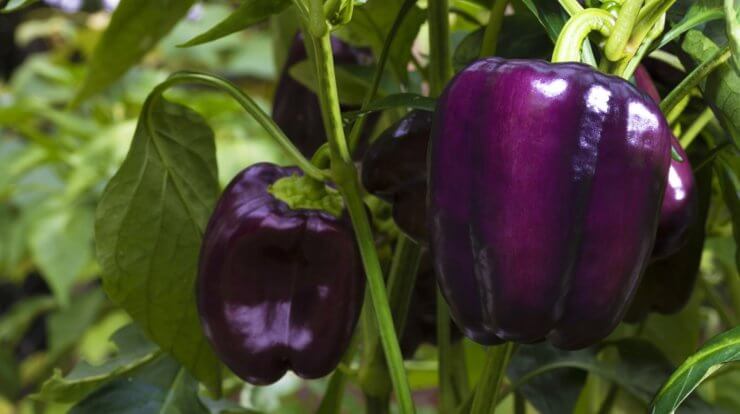
Purple Beauty might just blow your mind the first time you see it growing. These peppers emerge as deep violet beauties that look almost fake in their intensity. The purple comes from anthocyanins–the same compounds that color blueberries and eggplants. Here’s the cool part: they’ll eventually turn red if left on the plant, but most gardeners harvest them in their stunning purple phase for the wow factor. The flavor is surprisingly sweet and mild, perfect for fresh eating.
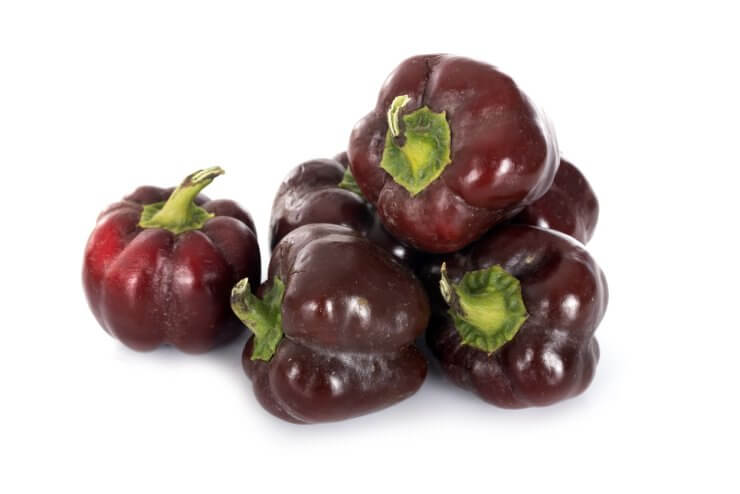
Sweet Chocolate peppers look like they’ve been dipped in cocoa powder, sporting rich brown skin that’s absolutely gorgeous when sliced to reveal bright red flesh inside. This variety originated in the 1960s and has a distinctly fruity flavor that sets it apart from standard bells. Fun fact: the brown color develops best in cooler fall weather, so these are perfect for extending your harvest season.
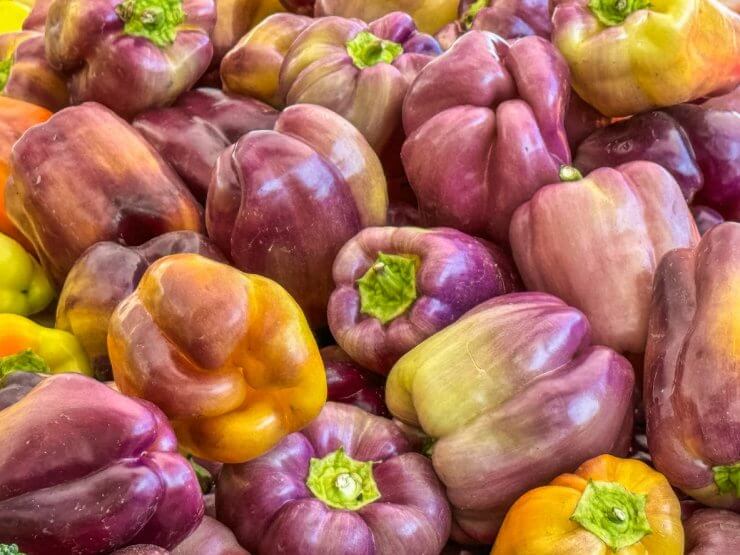
Lilac Bell peppers are the unicorns of the pepper world–pale lavender skin that almost seems to glow in the garden. They maintain their crisp texture and mild flavor while providing an otherworldly appearance that never fails to spark conversations. The lavender color is most pronounced in young fruits and fades slightly as they mature.
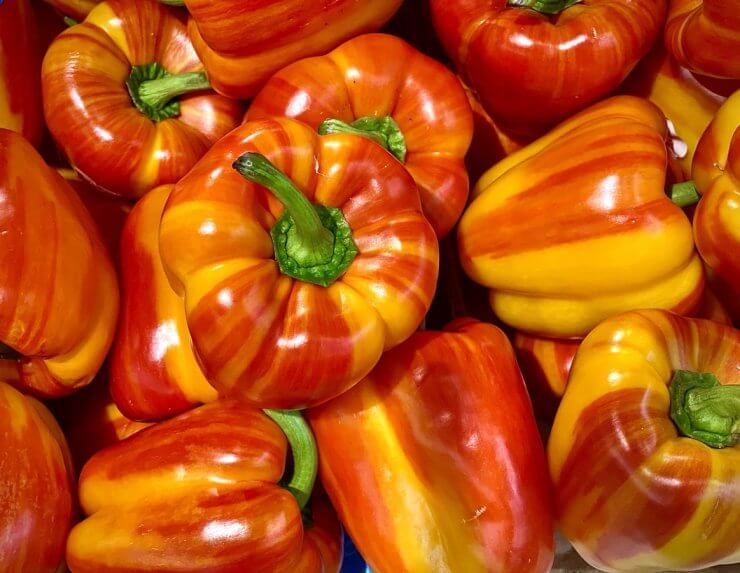
Chinese Giant peppers tell one of the most fascinating stories in American vegetable breeding. Introduced by W. Atlee Burpee in 1900, this was the first truly “giant” bell pepper—twice as big as anything available at the time! Burpee specifically bred it by crossing varieties to achieve what he called the perfect trifecta: “gigantic size, intense gem-like color, and mellow sweetness.” These green-to-red beauties can reach 4-6 inches and were revolutionary enough to inspire a whole era of giant pepper breeding.
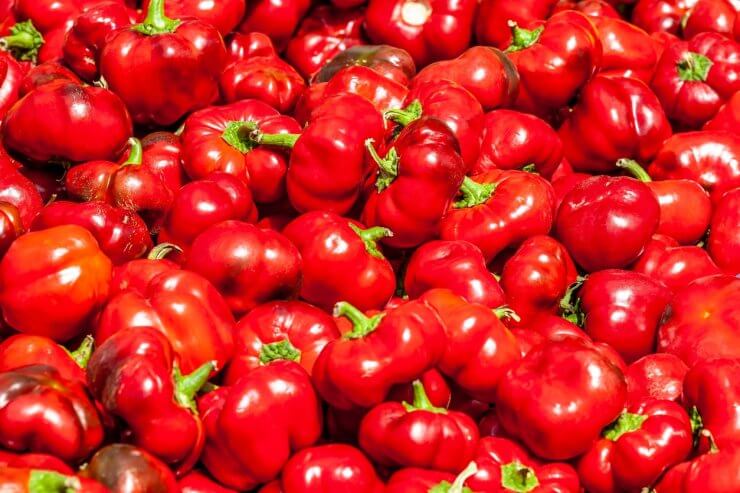
Mini Red Bell peppers provide the perfect contrast to Chinese Giant—this charming Ohio family heirloom produces tiny, perfect bell peppers just 2-3 inches across. Preserved for generations by the family of Lucina Cress, these compact gems pack full bell pepper flavor into a bite-sized package that’s perfect for stuffing, pickling, or adding whole to salads.
Stories Behind the Seeds
Every heirloom carries history in its DNA. Purple Beauty was developed by Dr. John Stommel at the USDA Agricultural Research Service, proving that not all heirlooms are ancient–some are modern varieties bred with traditional methods. Sweet Chocolate emerged from the dedicated work of seed companies preserving unusual color variations that might otherwise have vanished.
Many of these varieties survived because of immigrant families who smuggled seeds in coat linings and jewelry boxes, desperate to maintain connections to their homeland through familiar flavors. Seed banks like the Svalbard Global Seed Vault now preserve thousands of pepper varieties, but the real heroes are backyard gardeners who grow them out year after year.
The cultural significance runs deep–peppers were among the first crops Columbus brought back to Europe, and different regions developed their own beloved varieties over centuries. When we grow heirlooms, we’re participating in humanity’s oldest agricultural tradition.
Growing & Seed-Saving Tips
Heirloom peppers thrive in warm, well-draining soil with full sun–at least 6–8 hours daily. They’re heavy feeders, so work compost into your beds and provide consistent moisture without waterlogging. Start seeds indoors 8–10 weeks before your last frost date, as peppers need warm soil to germinate (75–80°F is ideal).
For seed saving, isolation is crucial. Peppers are mostly self-pollinating but can cross-pollinate via insects, so keep different varieties at least 50 feet apart, or grow them in separate seasons. Harvest seeds from fully ripe fruits–let that Purple Beauty turn completely red, even if it takes longer.
Here’s a pro tip most gardeners miss: ferment your pepper seeds for 2–3 days in their own pulp before cleaning and drying them. This mimics natural decomposition and actually improves germination rates while reducing disease transmission.
Why They’re Making a Comeback
The heirloom renaissance reflects our growing appreciation for biodiversity and unique flavors. Home cooks love the dramatic colors for Instagram-worthy dishes, while farmers market vendors can charge premium prices for unusual varieties that grab attention.
Seed companies are responding by offering more heirloom varieties than ever before. Southern Exposure Seed Exchange, Baker Creek, and others have made rare peppers accessible to everyday gardeners, not just serious collectors.
Perhaps most importantly, we’re rediscovering that vegetables can be beautiful, delicious, and meaningful all at once. In an age of increasing food uniformity, growing heirloom peppers is a small act of rebellion–and a delicious one at that.
Learn what it takes to add bell peppers to your garden plan in our Beautiful Bell Peppers Gardening Guide – Available Now!
What are your favorite heirloom bell peppers?


 Previous
Previous

